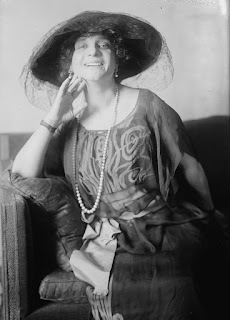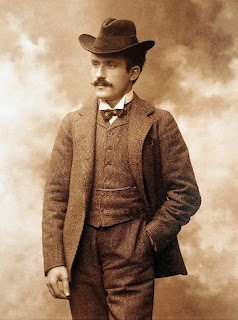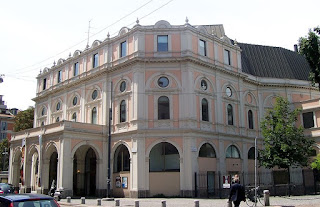Marco Simoncelli - motorcycle world champion
Young rider whose career ended in tragedy
The motorcycle racer Marco Simoncelli, who is part of an illustrious roll call of Italian world champions headed by Giacomo Agostini and Valentino Rossi, was born on this day in 1987 in Cattolica on the Adriatic coast. Simoncelli, who was European 125cc champion in 2002 in only his second year of senior competition, became 250cc world champion in 2008 when he won six races riding for Gilera. He had dreams of emulating Rossi, winner of the 250cc world title in 1999, in going on to be a force in the premier MotoGP category, in which the latter has been world champion seven times, just one fewer than Agostini's record eight titles. But after stepping up to MotoGP in 2010, Simoncelli suffered a fatal crash at the Malaysian Grand Prix in October the following year, killed at the age of just 24. On only the second lap of the Sepang circuit, he lost control of his Honda at a corner and appeared to be heading for the gravel run-off area but suddenly veered back across the congested track. With the bike almost on its side, Simoncelli was struck by two other competitors. One of them, with chilling irony, was Rossi, who was entirely blameless but unable to prevent his front wheel from striking his compatriot's head. Read more…
_____________________________________________________________
Federico Fellini – film director
The cinematic legacy of Rimini’s most famous son
Federico Fellini, one of the most influential filmmakers of the 20th century, was born on this day in Rimini in 1920. He had a career lasting almost 50 years and his films were nominated for 12 Academy Awards. He won four Oscars, each for Best Foreign Language Film, with La Strada, Nights of Cabiria, 8½ and Amarcord. Fellini initially went to Rome to study Law at university but ended up working as a journalist instead. His assignments for a magazine gave him the opportunity to meet people involved in show business and he eventually got work as a script writer for films and radio. Fellini worked as both a screenwriter and assistant director on Roberto Rossellini films as well as producing and directing for other filmmakers. He began work on his first solo film, The White Sheik, in 1951. It received mixed reviews but in 1953 his film, I Vitelloni, pleased both the public and the critics. He won his first Academy Award with Nights of Cabiria, starring his wife, Giulietta Masini, in 1953. Fellini’s film La Dolce Vita, starring Anita Ekberg and Marcello Mastroianni and set in Rome, broke all box office records in 1960 and won the Palme d’Or at the Cannes film festival. It is one of the most critically acclaimed films of all time. Read more…
___________________________________________________________
Franca Sozzani – magazine editor
Risk taker who turned Vogue Italia into a major voice
Franca Sozzani, the journalist who was editor-in-chief of the Italian edition of Vogue magazine for 28 years, was born on this day in 1950 in Mantua. Under her stewardship, Vogue Italia was transformed from what she saw as little more than a characterless clothing catalogue for the Milan fashion giants to one of the edgiest publications the style shelves of the newsstands had ever seen. Sozzani used high-end fashion and the catwalk stars to make bold and sometimes outrageous statements on the world issues she cared about, creating shockwaves through the industry but often selling so many copies that editions sometimes sold out even on second or third reprints. It meant that advertisers who backed off in horror in the early days of her tenure clamoured to buy space again, particularly when the magazine began to attract a following even outside Italy. She gave photographers and stylists a level of creative freedom they enjoyed nowhere else, encouraging them to express themselves through their photoshoots, particularly if they could deliver a message at the same time. She encouraged her writers, too, not to shy away from issues she thought were important, and not to regard fashion as an insular world. Read more…
__________________________________________________________
Rafael Bombelli – mathematician
First person to explain algebra in simple language
Rafael Bombelli, the mathematician regarded as the inventor of complex numbers, was baptised and was also probably born on this day in 1526 near Bologna. He wrote a book about algebra in simple language that could be understood by everyone, giving a comprehensive account of what was known about the subject at the time. The first three volumes, published in 1572, were the first European texts to explain how to perform computations with negative numbers. Rafael Bombelli was the eldest son of Antonio Mazzoli, a wool merchant, who had changed his name to Bombelli to disassociate himself from the reputation of his family. His grandfather had taken part in a failed attempt to seize Bologna on behalf of the Bentivoglio family but had been caught and executed. Antonio Mazzoli was able to return to Bologna only after changing his name to Bombelli. It is thought that Rafael Bombelli did not attend university but was taught by an engineer-architect named Pier Francesco Clementi. He followed Clementi into the profession and acquired a patron, Alessandro Rufini. His patron was given the right to reclaim marsh land in the Val di Chiana by the Pope and Bombelli worked on this project until 1555. Read more…

















